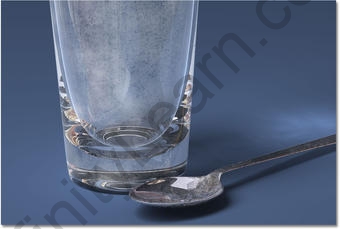Table of Contents
Water hardness is due to the presence of soluble bicarbonates, chlorides, and sulfates of calcium and magnesium. Water that does not give lather with soap is hard water.
Water Hardness
The simple definition of water hardness is the amount of dissolved calcium and magnesium in the water. Hard water is high in dissolved minerals, largely calcium and magnesium. You may have felt the effects of hard water, literally, the last time you washed your hands.
Depending on the hardness of your water, after using soap to wash you may have felt like there was a film of residue left on your hands. In hard water, soap reacts with the calcium (which is relatively high in hard water) to form “soap scum”. When using hard water, more soap or detergent is needed to get things clean, be it your hands, hair, or your laundry.
General guidelines for the classification of waters are 0 to 60 mg/L (milligrams per liter) as calcium carbonate is classified as soft; 61 to 120 mg/L as moderately hard; 121 to 180 mg/L as hard; and more than 180 mg/L as very hard.

TYPES OF WATER HARDNESS
The hardness of water can be classified into two types:
- Temporary Hardness
Temporary hardness is water hardness due to the presence of calcium and magnesium carbonates and bicarbonates, which can be precipitated by heating the water. It can be removed by processes such as boiling or lime softening, and then separation of water from the resulting precipitate. Temporary hardness is very common and is responsible for the deposition of calcium carbonate scale in pipes and equipment. These deposit formations lead to clogged plumbing and reduced efficiency of heat exchangers. Temporary hardness is also known as carbonate hardness.
Removal of Temporary Hardness
- a) Boiling – On boiling the bicarbonates of Ca and Mg decompose into insoluble carbonates, removed by filtration.
Ca(HCO3)2 →CaCO3 + CO2 + H2O
Mg (HCO3)2 →MgCO3 + CO2 + H2O
- b) Clark’s Process – Lime is added to precipitate out as Calcium Carbonate and Magnesium Hydroxide which are removed by filtration.
Ca(HCO3)2 + Ca (OH)2 → 2CaCO3 + 2H2O
Mg (HCO3) + Ca (OH)2 → 2 CaCO3 + Mg (OH)2 + 2H2O
- Permanent Hardness
Permanent hardness refers to the mineral content in the water that is not possible to remove through boiling. The hardness is typically caused by the presence in water of magnesium sulfates and/or calcium sulfate that does not undergo precipitation at increased temperatures.
It is due to the presence of chlorides and sulfates of calcium and magnesium. These salts do not decompose on boiling. So permanent hardness can’t be removed easily. It can be removed by soda (Na2CO3), surfactants (Na3PO4), or lime (Ca(OH)2) when MgSO4 is responsible for hardness.
CaSO4 + Na2CO3→ Na2SO4 + CaCO3
MgSO4 + Ca(OH)2→ Mg (OH)2 + CaSO4
A surfactant is a substance that tends to reduce the surface tension of a liquid in which it is dissolved.
Removal of Permanent Hardness
- a) By adding washing Soda – Ca and Mg ions are precipitated as insoluble carbonate which is removed by filtration.
CaCl2 + Na2CO3 → CaCO3 + 2NaCl
MgSO4 + Na2CO3 → MgCO3 + Na2SO4
- b) Ion – Exchange method – The ions responsible for hardness are exchanged with ions that do not cause precipitation.
- Inorganic ion exchange (permutit method) – In this method, sodium aluminium ortho silicate known as permutit or zeolite is used to remove the permanent hardness of the water.
Na2 Al2 Si2 O8.KH2O + Ca++→ 2Na+ + Ca Al2 Si2 O8.xH2O
- Organic ion exchangers (ion exchange resin) – In this method, the permanent hardness of water is removed by using resins. Ca++/Mg++ ions are exchanged with Cl–, SO4-2 ions are exchanged with anion exchange resin (RNH2OH). Demineralized water is formed in this process.
2RCOOH + Ca++ → (RCOO)2Ca + 2H+
RNH2OH + Cl– → RNH2Cl + OH–
H+ + OH– → H2O
Risks of having water hardness
Hard water is not a health hazard. The national research council states “that hard drinking water generally contributes a small amount toward total calcium and magnesium are very high, water could be a major contributor of calcium and magnesium to the diet.”
When in the cooking scale coats the pan. As a result of this heat transfer in the pan is not as efficient. which in other words means while cooking it won’t distribute heat as fast as it should. This basically causes food to either not be fully cooked or just food taking longer to be cooked.
Water hardness can also get stuck to your shower which is soap scum, get attached to your pipes and can cause clogs. Or to your shower head to cause your hair and body to be dry.
FAQs on Water hardness
How is the hardness of water classified?
The hardness of water is classified into temporary hardness and permanent hardness.
How is the hardness of water estimated?
The hardness of water is estimated by E.D.T.A. titration.
Infinity Learn App
Now you can find answers to all your subject queries & prepare for your Exams on our Ultimate Learning App for CBSE and K-12 – Infinity Learn.







